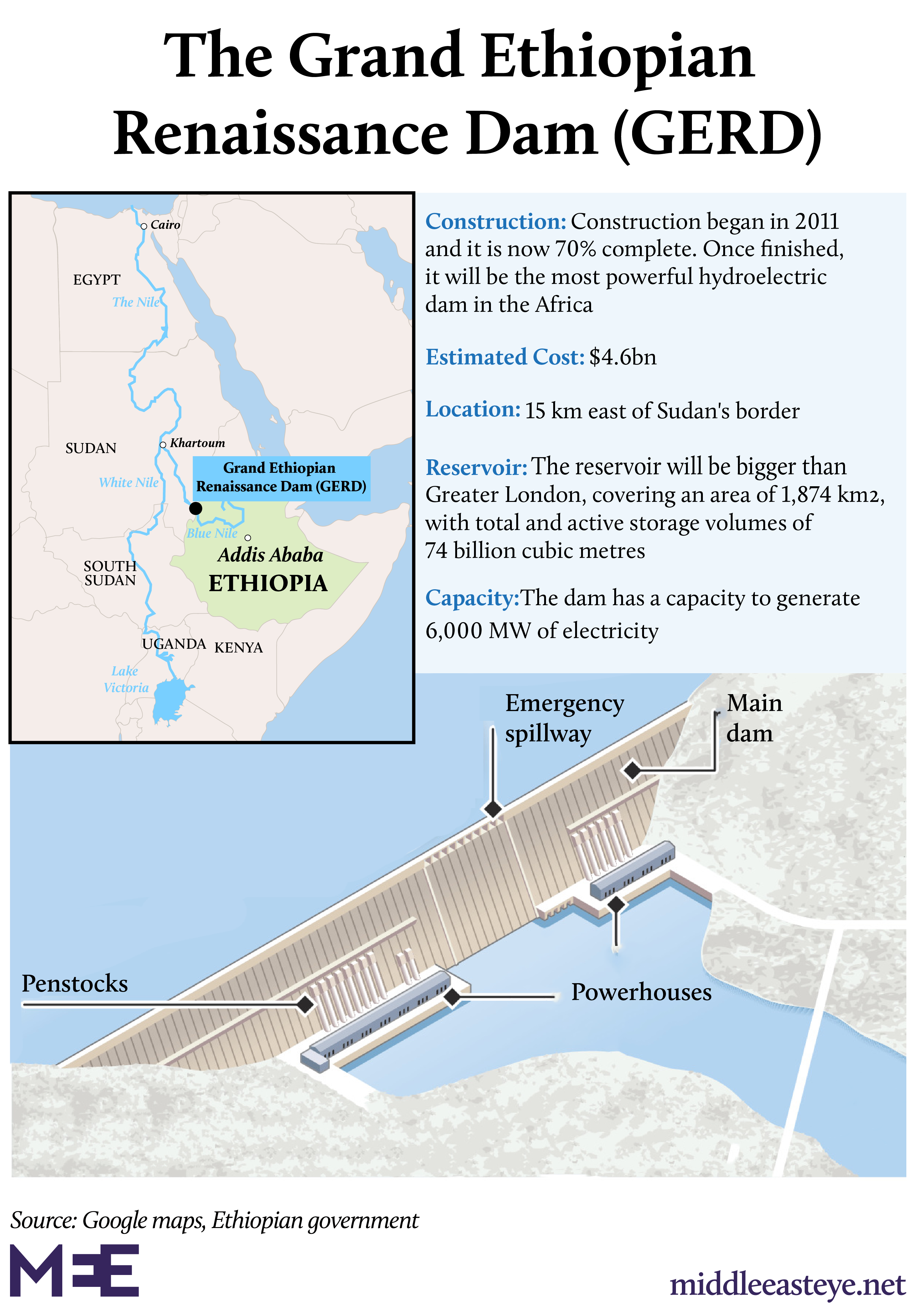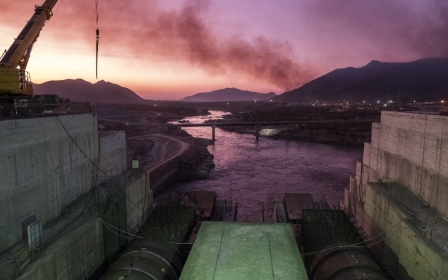Ethiopia says it has begun filling Nile dam, risking anger from Egypt and Sudan
Ethiopia has begun filling the Grand Ethiopian Renaissance Dam (GERD), after discussions with Sudan and Egypt over the enormous hydroelectric project on the Blue Nile were left at an impasse.
The move, announced by Ethiopia's water minister on Wednesday, is likely to provoke anger from its two neighbours, who are both also dependent on the river's waters.
The $4bn GERD will have an installed capacity of 6,450 megawatts - more than doubling the nation's existing electricity output - and is the centrepiece of Ethiopia's bid to become Africa's biggest power exporter.
Construction of the dam began in 2011 and is more than 70 percent complete.
"The construction of the dam and the filling of the water go hand in hand," Water Minister Seleshi Bekele said in televised comments.
"The filling of the dam doesn't need to wait until the completion of the dam."
The water level has risen to 560 metres from 525, he said.
Sudan's government said on Wednesday that water levels of the Blue Nile had declined by 90 million cubic meters per day.
Its Irrigation Ministry said in a statement that Sudan rejected any unilateral actions taken by any party as negotiating efforts continue among the two countries and Egypt.
Despite his earlier remarks, Bekele later claimed that Ethiopia had not started filling the dam.
The minister, his spokesman, and the spokeswoman for the prime minister's office did not return calls seeking clarification, Reuters said.
Egypt also asked Ethiopia for clarification on whether it had started filling the reservoir, the foreign ministry said.
On Tuesday, talks between Egypt, Sudan and Ethiopia to regulate the flow of water from the dam failed to reach any agreement.
Cairo has raised concerns that the already limited Nile waters - on which its population of more than 100 million is almost entirely dependent - would be further restricted by the new project. Egypt gets 90 percent of its fresh water from the Nile.
The dam is being built about 15km from the border with Sudan on the Blue Nile, the source of most of the Nile’s waters.
Sudan and Egypt have sought a legally binding agreement before the dam is filled.
Middle East Eye propose une couverture et une analyse indépendantes et incomparables du Moyen-Orient, de l’Afrique du Nord et d’autres régions du monde. Pour en savoir plus sur la reprise de ce contenu et les frais qui s’appliquent, veuillez remplir ce formulaire [en anglais]. Pour en savoir plus sur MEE, cliquez ici [en anglais].





